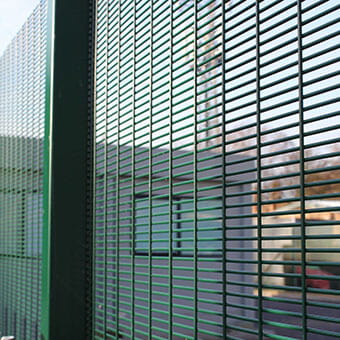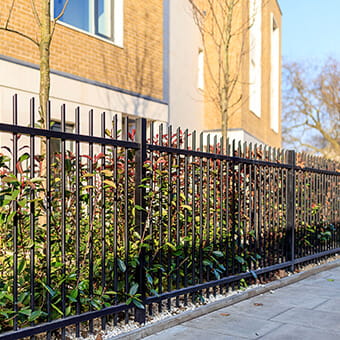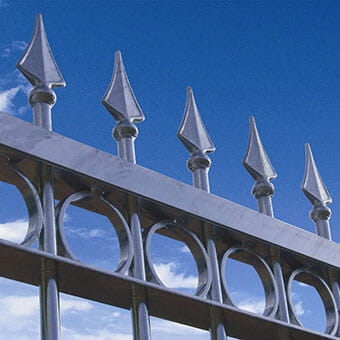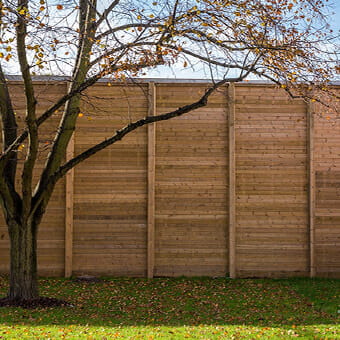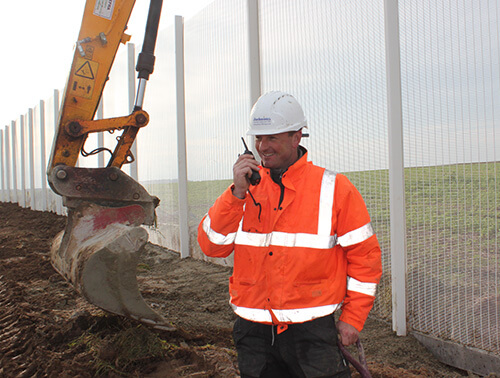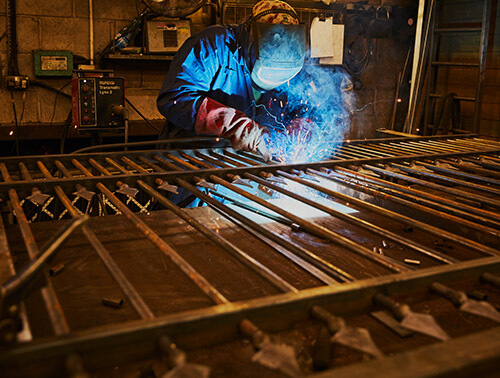Our other sites:
Timber fencing has always been a popular choice for many applications due to its natural, timeless, and unassuming look. We’re used to seeing it around residential properties, schools, business parks, and supermarkets. However, in recent years, there has been a clear rise in developers also choosing it for a wider range of commercial properties – either as an alternative for metal fencing, or used in combination with it.
Although metal fencing is often seen as the more durable option, high quality timber fencing can be just as long-lasting, especially when it is backed by a long guarantee. Often it is the preferable option when high security is not the key requirement driving the choice.
While metal fencing portrays a suitable aesthetic for most applications, it lacks the subtle, natural appearance of timber. Wooden fences blend into their surroundings, creating a pleasant work environment without overwhelming other elements. This is particularly important with commercial properties being positioned in more close proximity to residential areas. Besides the understated look, privacy and security, timber has another quality going for it –when pressure-treated, it’s also highly sustainable.
Timber vs. concrete posts
Concrete posts are often chosen over other types due to the misconception that they are more durable and easier to maintain. Concrete is a relatively impermeable material which mould and rot cannot easily penetrate. It can also withstand high wind speeds and is therefore often favoured in coastal areas.
While concrete posts do have their advantages, we choose not to manufacture them at Jacksons for a number of reasons. Aesthetically speaking, we find them too stark – concrete rarely blends into its surroundings and the natural environment without looking severe and abrupt.
Concrete is also typically more expensive to use than timber, and much more difficult to install, with an average post weighing in excess of 40kg. Fence panels cannot be fixed to concrete posts in the same way that’s possible with timber, where they can be screwed in and prevented from being lifted out to gain unauthorised access.
Although concrete is reasonably durable, it can still chip and crack. When this does happen, it becomes a bigger concern. Cracks allow water to travel deep into the post, and if it freezes, the cracks worsen over time. Eventually this exposes the inner metal reinforcement to rust. In addition, we mustn’t forget how destructive concrete is to the environment, making up between 4-8% of the world’s CO2 emissions, largely due to its cement content.
What many people don’t realise, is that timber is able to fully match concrete’s hard-wearing qualities when properly treated. This process ensures the timber will not rot. That’s why we’re confident enough to offer a 25 year guarantee on all our Jakcure®-treated products.
Types of timber fencing and their uses
Your project dictates which type of timber fencing is right for you. At Jacksons, we provide fence panels and traditional kit form fencing suited to any commercial application. Featherboard is a highly versatile option providing a neutral look that doesn’t take over. When privacy is a concern, it’s a great solution, as it can be used to screen off anything sensitive or unsightly, such as storage or rubbish bins.
Timber demarcation fencing is useful when high levels of security or privacy are not important, and you simply want to outline boundaries. You may want to indicate divisions between lawns and footpaths, to protect grass verges and decorative borders.
For this purpose, our timber Palisade provides a friendly, traditional feel as it resembles picket fencing. Knee rail or diamond rail fencing is a basic, functional offering which lends itself to use around carparks, for example. If you need added security, our verge protection markers and bollards come with reflectors making them visible even in the dark.
If the property in question includes or is situated near areas with unwanted noise, acoustic barriers are a solution. This could be anything from loud machinery such as air con units and generators, or simply lots of activity and movement of goods and people, such as delivery areas.
And if you’d like to combine the best of both worlds with timber and steel, we also offer that. Our EuroGuard® Combi welded mesh panels can be tailored to your needs - the advantage is to give you enhanced security while the closely spaced slats also provide privacy.
What should you look for?
Firstly, make sure the product has a long guarantee. Pressure treatment increases product longevity and sustainability, as it provides more protection from rot and insect attack than dip treatment. Stainless steel fixings work best in all types of weather, preventing rust while increasing the strength with which pales and panels are held in place.
When choosing traditional kit form featherboard fencing, make sure the posts are notched. This allows rails to be recessed into them, creating a stronger fence than by simply nailing the rails onto the posts. Installing fence panels with slotted posts and securing them with timber screws provides added security; if you just nail the panels onto square posts it is easier to remove them to gain access within the perimeter.
With knee rail fencing, straps should be galvanised, and the timber also treated specifically for in-ground use. Gravel boards are also essential for protecting panels from the ground.
Contact us to find out more about our range of timber fencing and gates for commercial properties.
Related Products
Jacksons Fencing have a large range of related products, all complete with our 25 year guarantee. If you cannot find the item you are looking for, please do not hesitate to call our friendly sales team.
Related Content
Top
